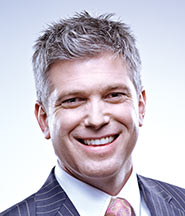
Aligning your actions with your image as a professional
Who are you as an educator? Facilitator? Adviser? Peacekeeper? Your students don’t always see you as you envision yourself. The College’s Registrar advocates self-reflection and some helpful resources.
by Michael Salvatori, OCT
I often take a book of students’ drawings with me when I’m invited to speak with teachers. The book is a collection of drawings of me done by Grade 1 students I saw frequently when I served as an elementary school principal.
They depicted me in one frame as a very tall figure, dressed in a brown suit with an atrocious tie, supervising the yard at recess and accompanying students to the bus at the end of the day. The role of helper.
One picture projects my voice over the PA, squawking out reminders to play safely or to return overdue library books. Me as authoritarian.
Another frame shows a student with a wide grin as I compliment his work. Teacher as praise giver, perhaps. Advocate. Champion. Assessor. They all work.
Numerous sources contribute to the construction of who we are as teachers.
The various settings and activities are telling and instructive. They represent the way students saw me. They allowed me to reflect on how I saw myself and to consider the differences.
Performer. Expert. Counsellor. Facilitator. Mender of hurt feelings. Peacekeeper.
No, these are not the titles of additional drawings but the terms a group of FSL teachers in York Region generated during a recent dialogue. At the time we were discussing changes to second-language teaching and learning in the 21st century and exploring how teachers develop throughout their careers. We also discussed the ways we develop our individual personas as teachers.
I pulled out my trusty keepsake pictorial to illustrate some of the ways students perceive us.
Numerous sources contribute to the construction of who we are as teachers.
Our own values and the way we were taught as students (sociologist Daniel Lortie’s notion of an “apprenticeship of observation,” 1975) are two rich and powerful influences on how we become who we are as teachers. Lortie said that those who become teachers serve an apprenticeship as students. They become acquainted with the tasks of teaching and learn to identify with teachers. It’s not analytic or scientific, but it helps to create a lasting impression. The research shows it sometimes takes informed and reflective practitioners to grow beyond the traditions that are perpetuated in education by those early observations.
The Standards of Practice for the Teaching Profession and the Ethical Standards for the Teaching Profession offer additional descriptions of what it means to be a teacher in Ontario.
The kit encourages teachers to reflect on and explore their practice.
Our Fostering Professional Inquiry resource kit is based on these standards. Developed by teachers and facilitated by College staff, the kit encourages teachers to reflect on and explore their practice in order to enhance it. It offers a variety of strategies that include case studies, an interactive script and an ethical decision-making guide, along with how-to booklets and guides to integrate practice standards.
The College’s Margaret Wilson Library has many additional resources on finding one’s identity as a teacher.
Research is also an excellent source of information for reflection and dialogue. The General Teaching Council for England (the Ontario College of Teachers’ counterpart) has examined teachers’ beliefs and their impact on student learning. For example, whether you believe students benefit more from working by themselves or from working with others can profoundly affect the way you teach and how your students learn.
Performer or peacekeeper, facilitator or mender of hurt feelings, the list of descriptors for teachers will surely expand. Society changes constantly. Family, economic and political pressures come to bear on classrooms every day.
To help many, begin with one.
Teacher, know thyself.
